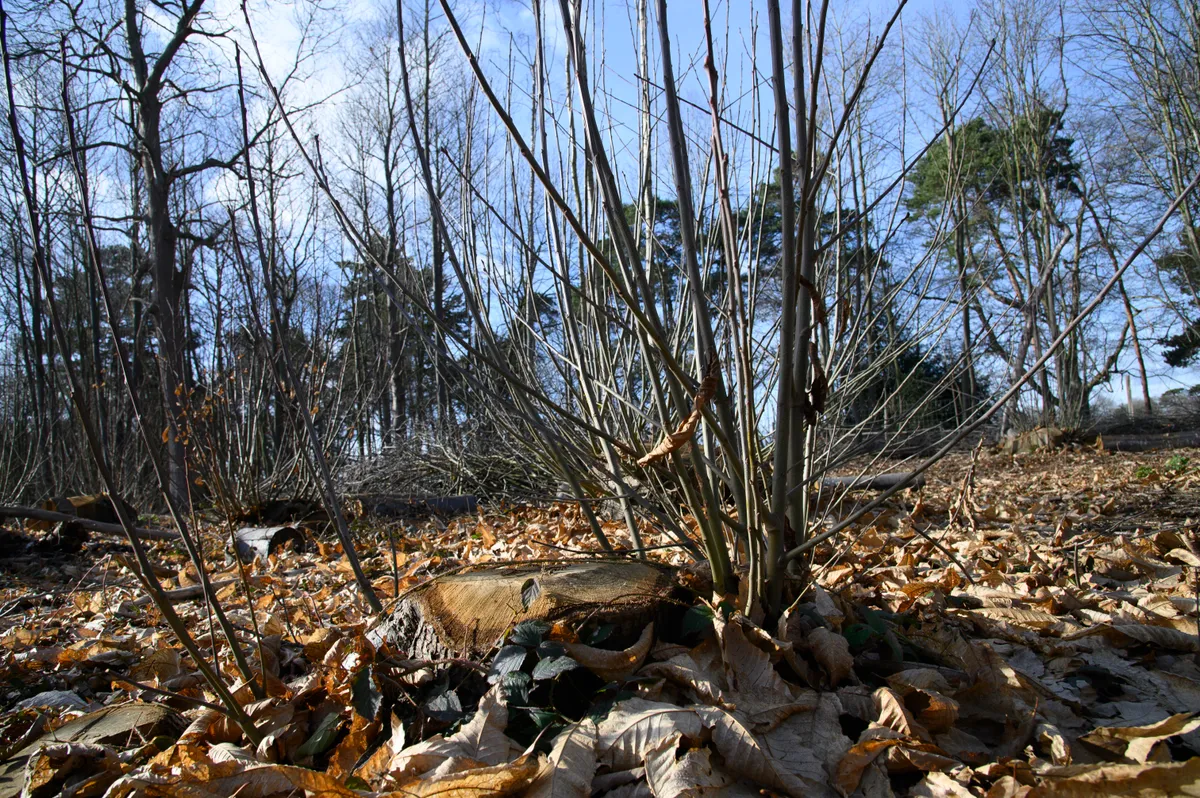Coppicing is being reintroduced at Sutton Hoo to create new habitat for nightingales and other endangered birds.
The important National Trust archaeological site – home to a royal Anglo-Saxon burial and the subject of 2021 film The Dig – has long been a habitat for nightingales. But with the species declining in the UK by as much as 90% in the past 50 years, Sutton Hoo is one of the last remaining habitats for the birds in East Anglia, with four singing males recorded in 2022.
Now the National Trust is turning to the traditional woodland management technique of coppicing – which has been used since the Stone Age – to create the kind of dense scrub that nightingales can nest in.
“Coppicing has so many benefits for nature. Not only can coppicing help trees to live longer, but it also lets more light and warmth on to the woodland floor,” says Jonathan Plews, National Trust ranger at Sutton Hoo.
“Different species benefit from different levels of light, so having areas at all stages of tree growth supports a wide variety of wildlife, including many rare species of birds.”

Coppicing – the practice of repeatedly cutting back tree growth to create multiple, small saplings instead of a thick single trunk – is known to have been carried out by humans since the Stone Age. It provides ideal habitat for a number of birds, including the red-listed nightingale, which nests at ground level or just above. One of the biggest factors in its decline is said to be habitat loss in the UK, through deforestation, increased deer populations and changes of land use.
You may also like:
- Nightingale guide: species facts and how Britain’s songbird is under threat
- Podcast: A sensational evening of singing with nightingales – with folk singer Sam Lee
- Long barrows in Britain: history and best to visit
Image: Nightingale (Luscinia megarhynchos) singing in tree, Lincolnshire./Credit: Getty

The coppicing will be undertaken using chainsaws and a mini tractor to limit disturbance to the woodland floor and protect the archaeological features in the area. These include a Roman quarry and Second World War anti-aircraft platform.

“As we begin coppicing, we would expect to see flowers such as bluebells, wood anemone and foxglove grow, along with bramble, which is the perfect nesting habitat for nightingales,” continues Jonathan.
“It will take a few years for the bramble to establish, but in approximately four years we hope to see more nightingales moving in, as well as other protected and ‘at risk’ birds, such as spotted flycatcher, wood lark and nightjar.”
The wood felled as a result of the project will be used to create gateways, benches, sculptures, fences and bird boxes throughout the estate.

